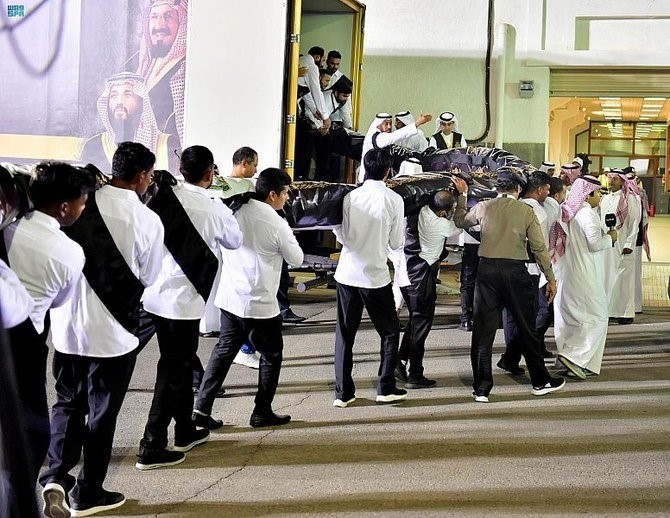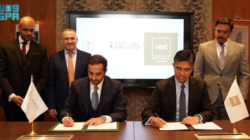RIYADH: The new cover of the Holy Kaaba in Makkah was erected early Saturday, at the start of the new Islamic year 1444, breaking with convention.
The Kiswa was previously replaced once a year during Hajj, notably on the morning of Dhul Hijjah 9 after the pilgrims went to Mount Arafat, in preparation for greeting worshippers the next morning, which coincided with Eid Al-Adha.
The General Presidency for the Two Holy Mosques in Saudi Arabia announced last month that the annual ceremony would be place on the eve of Muharram 1, the first day of the Hijri calendar.
The president of the Two Holy Mosques, Sheikh Abdulrahman Al-Sudais, stated that the modification was made due to a royal decision.
According to the Saudi Press Agency, the Kiswa was changed early Saturday by a team of 200 Saudi specialists from the King Abdulaziz Complex for Manufacturing the Kaaba’s Kiswa, who were overseen by Sheikh Sudais.
The process was described as follows by the SPA: “The new kiswa consisted of four separate sides and the door curtain was installed; each of the four sides of the Kaaba was raised separately to the top of the Kaaba in preparation for its unfolding on the old side, and fixing the side from above by tying it down and dropping the other end of the side after the ropes of the old side were loosened.”
“By sliding the new side up and down in a permanent movement, then the old side fell from below and the new side stayed, and the procedure was repeated four times for each side until the dress was finished, then the belt was stitched in a straight line to the four sides.”
“Because of the presence of the gutter, which has its own hole at the top of the garment, this operation began with the side of the hem, and once all sides were fixed, the corners were repaired by stitching them from the top of the garment to the bottom.”
Technicians at the King Abdulaziz Complex weave, stitch, and print the Kiswa by hand and machine, utilizing 47 pieces of cloth and thread. The operation is carried out by the world’s largest automated sewing machine, which is 16 meters in length.
The fabric is stitched together in five sections and secured to the base using copper rings. At the complex, around 670 kg of raw silk are colored black.
The Kiswa is embroidered with 120 kilos of 21-karat gold thread and 100 kilograms of silver thread with Quranic passages.
A new 850-kilogram Kiswa is anticipated to cost SR25 million, or more than $6.5 million, making it the most costly covering in the world.
Source: Arab News








